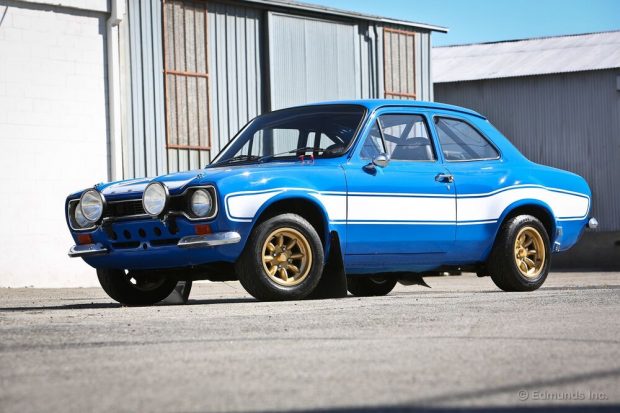
By Dave Ashton
Cousins range in appearance from looking identically like you, or as if they were from an alien race. No matter the outward appearance, cousins share some semblance of DNA, the same goes for muscle cars and their counterparts. In this case, we are looking back to the height of the golden muscle car era with Ford, 1970.
In North America, Ford had the likes of the Mustang with V6 and V8 engines ranging from the 200cu.(3.3L) to the 428cu.(7L) Cobra Jet and the 429cu(7L) Boss V8. Head over to the UK, where Ford has been a mainstay brand since 1910(when they opened their first dealership), Ford fans could buy a Ford Escort Mk1 RS2000 with a 2.0 litre Pinto engine. In comparison, the Ford Escort weighed 1,690 lb (767 kg), while the Mustang weighed 2,888-3,472 pounds.
Apples and Oranges
Apart from the Ford badging, the Mustang and the Ford Escort on the surface couldn’t be more different. The Mustang was built for North American sensibilities. A nineteen seventies Ford Mustang was a large vehicle, with huge displacement, cheap gas compared to European prices, with the playground of very long and wide open roads. Basically, bigger is better. The Ford Escort Mk1 was built between 1968 and 1975, while the Mustang popped up in 1964 and is still produced today.
The European car building mentality was and still is to squeeze the most out of a smaller displacement engine, usually between 1L and 3L. Gas prices are traditionally far more expensive in Europe compared to North America, with shorter and more winding roads. Thus, a lighter and more nimble vehicle was needed to exit your country Manor estate. A good example of the European application is in rallying, where cornering through off-road conditions is the norm.
The Mk1 RS2000-R Escort example you see here(2L), even with a full engine rebuild is 206hp. Compare this to the 428(7.0 L) Cobra Jet V8 engine which had an advertised power rating of 335hp. A base model Escort Mark I had roughly 97hp at the flywheel and 64.5hp at the wheels. For 1970, the Mustang had a 200cu (3.3 L) Thriftpower I6 engine with 120hp as its smallest engine.
As an example of the power output, a Ford Escort RS Mexico had a 1.6L, four-cylinder engine, which was good for a top speed of 99mph, and could do a 0-60mph time of 10.7sec. All this with a curb weight of 785kg.
The engine standard of most European vehicles, including the Ford Escort was four cylinders. Although this may seem meagre to North American values, the light and nimble Escort went on to win the 1970 London to Mexico World Cup Rally, the 25th Lombard RAC Rally, and many more. It was also featured in the tank scene from Fast and Furious 6.
While the Mustang and the Ford Escort are equally loved for their plus points, they suffered from a common component, being rust. Carburettors, leaf spring suspension, and pure analogue mechanics were on both cars, but so were rotted out sills, wheel arches and floor pans if you were not careful. Many a junkyard of the day had stacks of Ford Escorts queueing up for the crusher for just this reason. Another commonality between both cars, they both sold in the bucketful.
Conclusion
The 1970 Ford Mustang and the Mark I Ford Escort had completely different points of view for their different markets, but with the same global heritage. America used more displacement for more power, for heavier vehicles. Europe needed lighter vehicles with smaller engines to cope with the smaller, winding roads, and higher gas prices.
The Ford Escort may not be classed as a muscle car, but you can appreciate the common ancestry and how it answered a certain set of problems.
VN:F [1.9.22_1171]
VN:F [1.9.22_1171]
Source link


